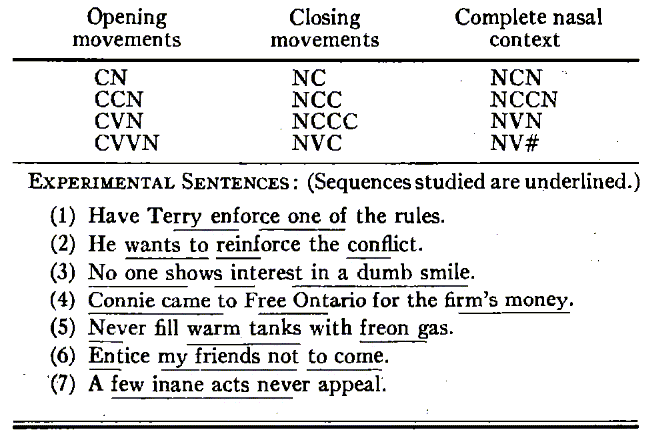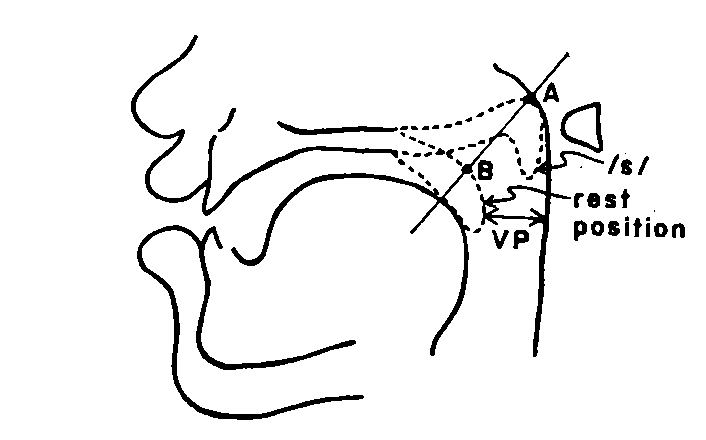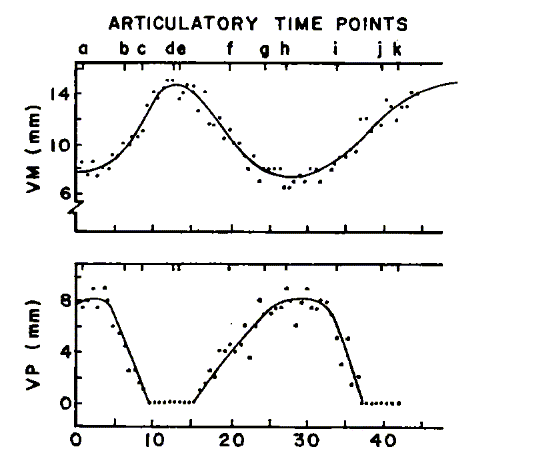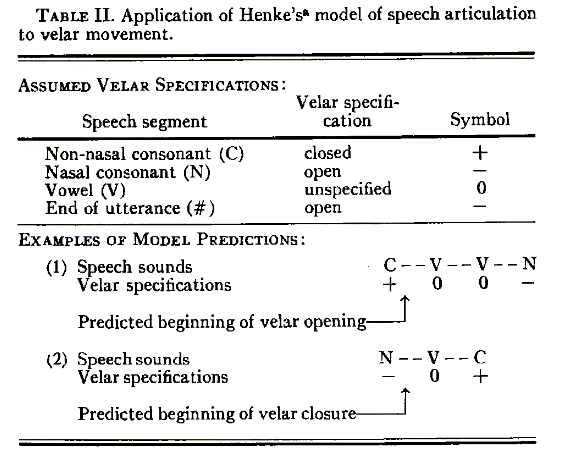
Bibliography
Henke, W. (1966) Dynamic articulatory model of speech production using computer simulation. MIT PhD dissertation. https://dspace.mit.edu/handle/1721.1/22396
Kozhevnikov, V. A. and L. A. Chistovich (1965) Speech: Articulation and Perception. English translation: U. S. Dept. of Commerce, Clearing House for Federal Scientific and Technical Information.
Structure
| See note below | Heading | |||
| 1, 2 | INTRODUCTION | Includes two hypotheses | ||
| 3 | I. PROCEDURES | A. Subjects | Conduct of the experiment | |
| 4 | B. Speech Samples | |||
| 5 | C. Equipment and Procedures | |||
| 6 | D. Measurements and Data Analysis | |||
| 7-10 | II. RESULTS | Observations are reported | ||
| 11, 12 | III. DISCUSSION | Theoretical implications are drawn | ||
| Acknowledgements and references | ||||
1. Introduction: contrasts two models of coarticulation (two hypotheses):
3. A homogenous pool of four subjects. Similar sex, age, physical condition, dialect.
4. A phonologically interesting set of segment sequences (table 1).

5. Technique: cinefluorographic films. Barium sulphate paste was smeared on the tongue and palate so that soft tissue would be visible on the film.
6. Analysis: frame-by-frame tracings of the images. Two distances, VM and VP were measured (Fig. 1).

7. For -CN- segment sequences, time of beginning of velar opening was noted. Velum opening begins just before or coincident with start of oral articulator movement toward the nasal, pro Henke, contra Kozhevnikov and Chistovich.
8. For -NC- clusters, movement toward velar closure (i.e. orality) began during the nasal consonant (Fig. 2).

9. For NVC sequences, velar closure began during the nasal or vowel (i.e. there was some carry-over).
10. In CVVN sequences, velar opening started at or before the beginning of tongue movement toward the first vowel. Anticipatory nasalizations over up to two vowels, even across a word boundary.
11. (10) is the main finding. It cannot be explained readily in the K-C model, but can be explained by Henke's model (Table II).

12. Wider discussion. Suggests a study of French as a profitable next step. Models assuming units larger than CV syllables might be consistent with these observations too. Perceptual significance of coarticulation has been noted by other researchers.